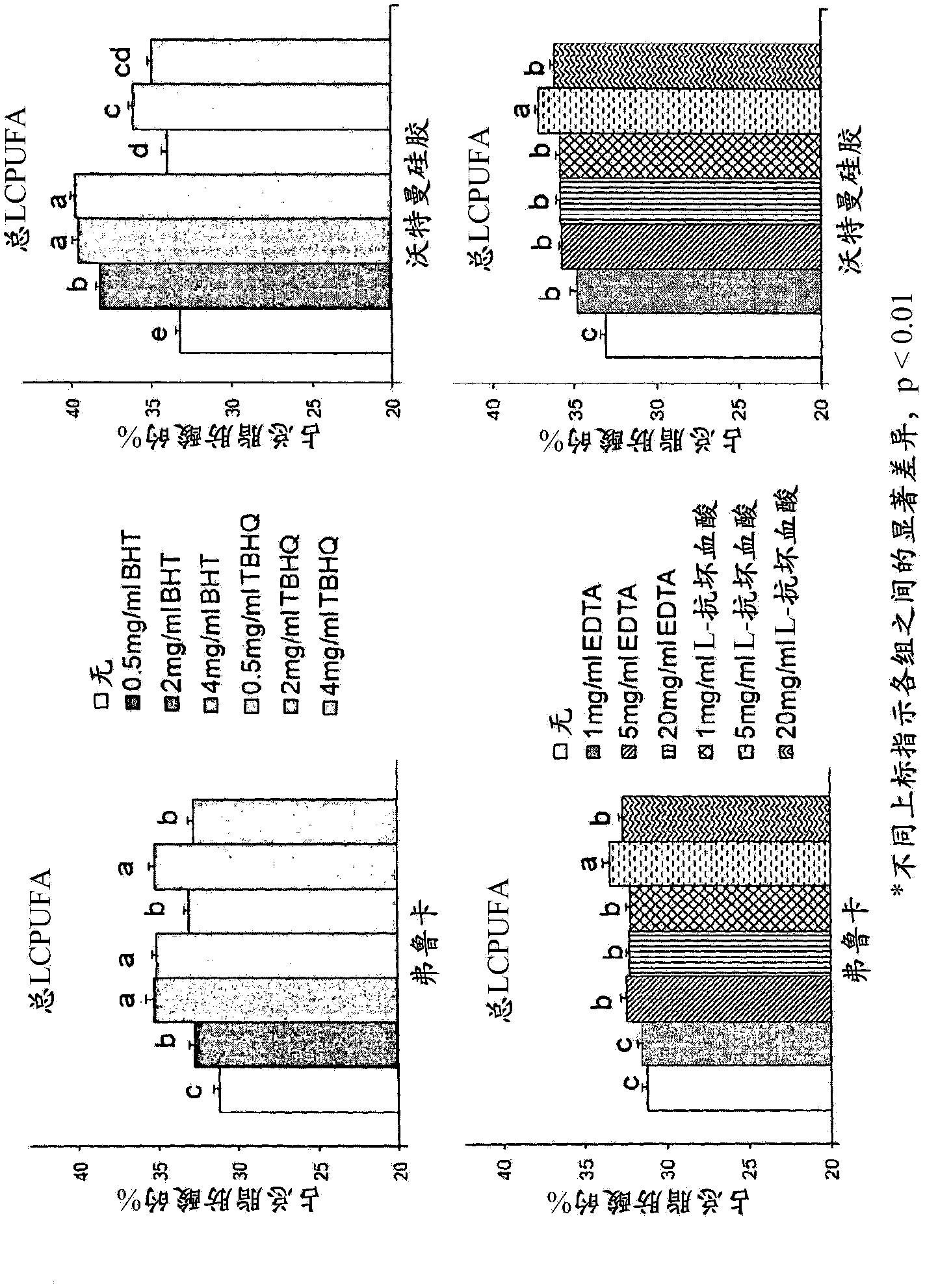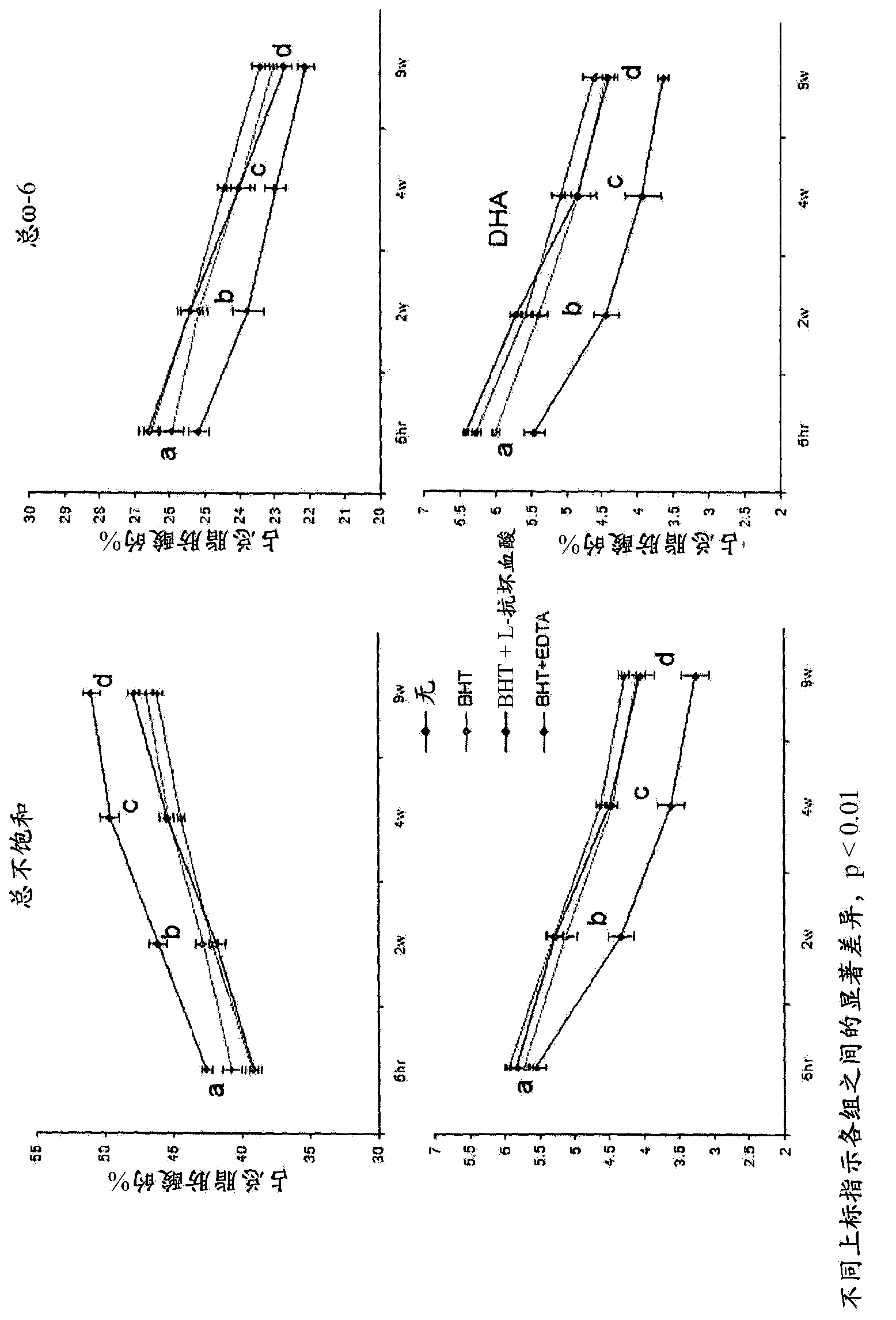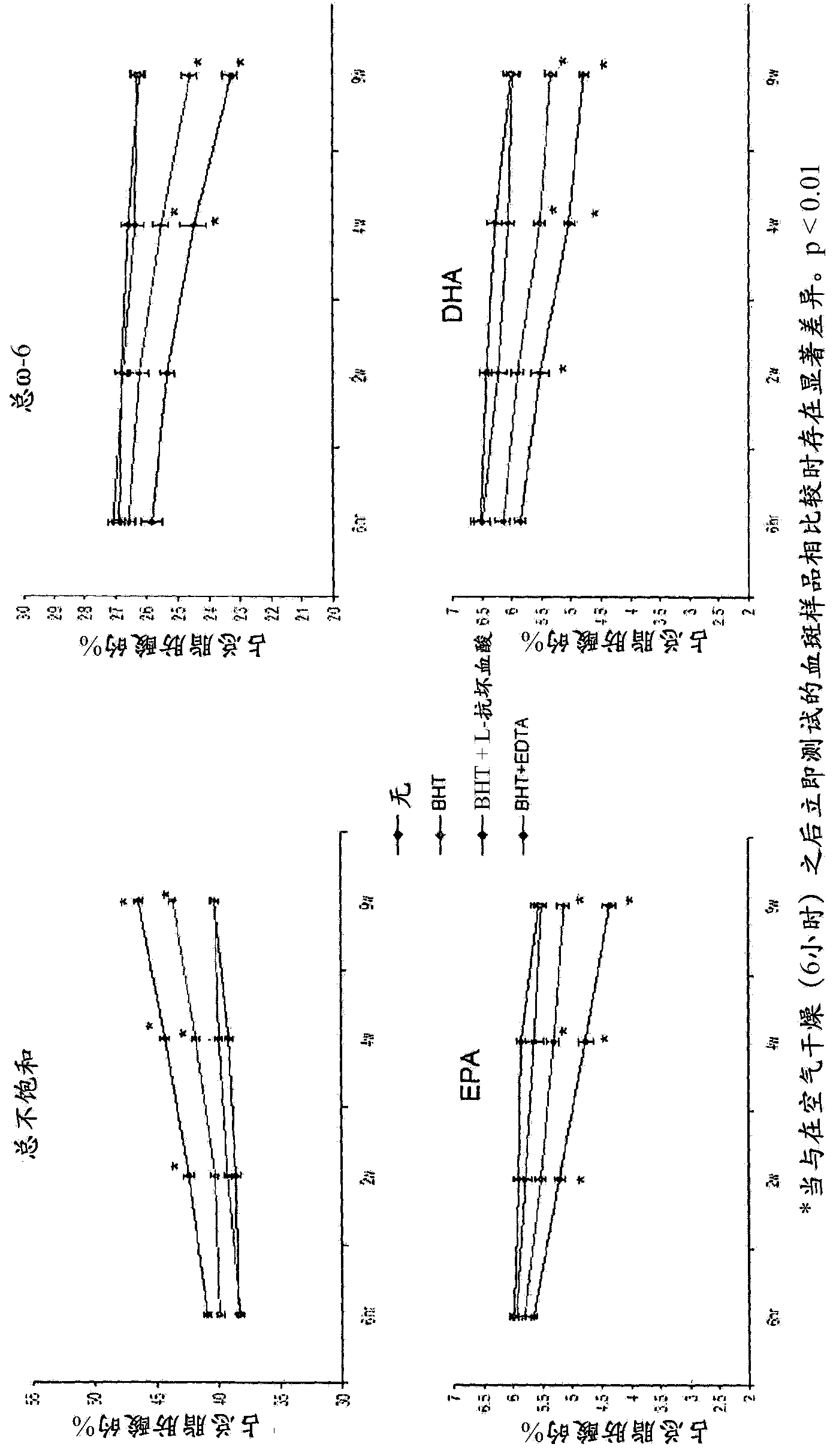Stabilising and analysing fatty acids in a biological sample stored on solid media
一种固体介质、脂肪酸的技术,应用在产生脂肪、测试用样品的制备、分析材料等方向,能够解决血斑方法不实用等问题
- Summary
- Abstract
- Description
- Claims
- Application Information
AI Technical Summary
Problems solved by technology
Method used
Image
Examples
example 1
[0127] Example 1 - Stabilization of blood spots on Whatman silica gel chromatography paper using a combination of BHT and ascorbic acid / EDTA
[0128] Materials and methods
[0129] blood collection paper
[0130] Two types of paper were used for blood spot collection: Fruka blood collection kit paper (Sigma-Aldrich, Buchs, Switzerland) and Waterman silica gel chromatography paper (46 × 57 cm, Waterman, Buckingham, UK). Two commercial phenolic antioxidants, butylated hydroxytoluene and tert-butylhydroquinone (TBHQ), were purchased from Sigma-Aldrich (St Louis, MO). Iron chelator, L-ascorbic acid and EDTA were purchased from Chem-supply Company (Gillman, South Australia).
[0131] Antioxidant / Chelating Agent (Protectant) Solution
[0132] Fourteen protectant formulations were prepared to stabilize fatty acids in blood spots on two types of collection paper (Table 1). In order to determine the optimal concentration of antioxidants to control lipid oxidation in blood spots,...
example 2
[0161] Example 2 - Stabilization of plasma plaques on Whatman silica gel chromatography paper using a combination of BHT and EDTA
[0162] Blood was collected from subjects who regularly consumed one fish oil capsule per day. The blood samples were centrifuged at 3000 rpm for 10 minutes at 4°C to separate plasma and erythrocytes. A drop of plasma (approximately 50 μl) was directly transesterified and the resulting FAMEs analyzed by GC to provide a baseline value for the fatty acid composition in plasma total lipids. The remaining plasma was split in two, the first stored at -20°C and tested for fatty acid composition by direct transesterification at 1, 2 and 4 weeks. The second aliquot was dropped onto Waterman silica gel chromatography paper (46 x 57 cm, Waterman, Buckinghamshire, UK) soaked with 2 mg / ml BHT and 5 mg / ml EDTA (approximately 50 μl per paper), And dry in air for 5-6 hours. Plasma spots were then stored in cellophane bags at room temperature (19°C-23°C) in the...
example 3
[0167] Example 3 - Stabilization of milk spots on Whatman silica gel chromatography paper using a combination of BHT and EDTA
[0168]Milk was obtained from subjects who had been lactating for 5 months and were not receiving fish oil supplementation. A drop of milk (approximately 50 μl) was directly transesterified and the resulting FAMEs analyzed by GC to provide a baseline value for the fatty acid composition of the milk's total lipid. Drop the rest of the milk onto Waterman silica gel chromatography paper (46×57cm, Waterman Company, Buckinghamshire, UK) soaked with 2mg / ml BHT and 5mg / ml EDTA (about 50 μl per piece of paper), and air Dry in medium for 5-6 hours. Once the milk spots are dry, divide them into 4 groups. The first group was immediately transesterified following the same transesterification procedure as for fresh milk. The results obtained from these samples were compared with those obtained by direct measurement of the fatty acid composition of fresh milk to ...
PUM
 Login to View More
Login to View More Abstract
Description
Claims
Application Information
 Login to View More
Login to View More - R&D
- Intellectual Property
- Life Sciences
- Materials
- Tech Scout
- Unparalleled Data Quality
- Higher Quality Content
- 60% Fewer Hallucinations
Browse by: Latest US Patents, China's latest patents, Technical Efficacy Thesaurus, Application Domain, Technology Topic, Popular Technical Reports.
© 2025 PatSnap. All rights reserved.Legal|Privacy policy|Modern Slavery Act Transparency Statement|Sitemap|About US| Contact US: help@patsnap.com



